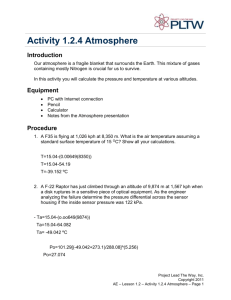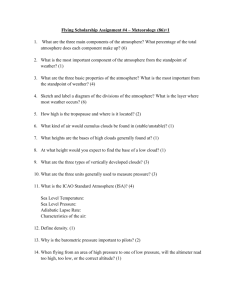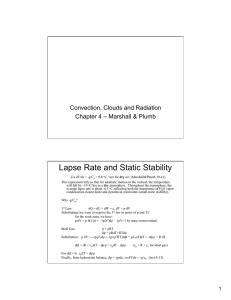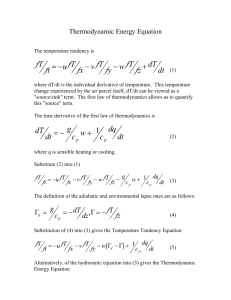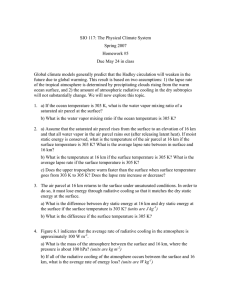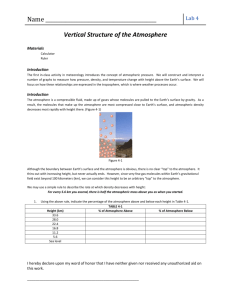Mtg04
advertisement
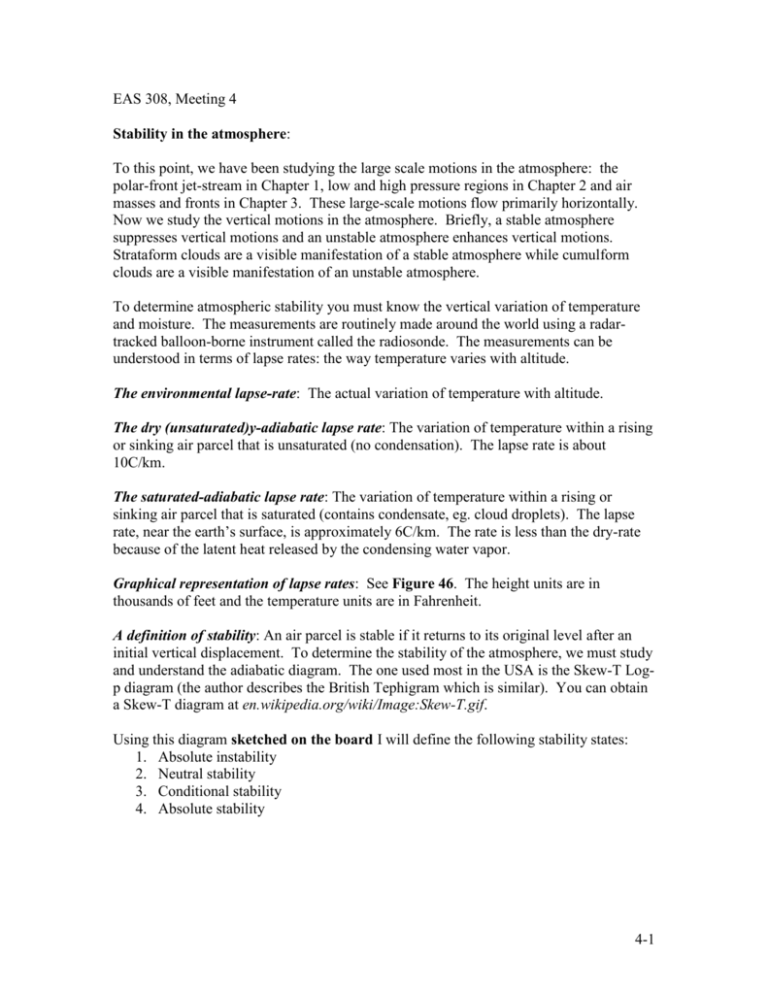
EAS 308, Meeting 4 Stability in the atmosphere: To this point, we have been studying the large scale motions in the atmosphere: the polar-front jet-stream in Chapter 1, low and high pressure regions in Chapter 2 and air masses and fronts in Chapter 3. These large-scale motions flow primarily horizontally. Now we study the vertical motions in the atmosphere. Briefly, a stable atmosphere suppresses vertical motions and an unstable atmosphere enhances vertical motions. Strataform clouds are a visible manifestation of a stable atmosphere while cumulform clouds are a visible manifestation of an unstable atmosphere. To determine atmospheric stability you must know the vertical variation of temperature and moisture. The measurements are routinely made around the world using a radartracked balloon-borne instrument called the radiosonde. The measurements can be understood in terms of lapse rates: the way temperature varies with altitude. The environmental lapse-rate: The actual variation of temperature with altitude. The dry (unsaturated)y-adiabatic lapse rate: The variation of temperature within a rising or sinking air parcel that is unsaturated (no condensation). The lapse rate is about 10C/km. The saturated-adiabatic lapse rate: The variation of temperature within a rising or sinking air parcel that is saturated (contains condensate, eg. cloud droplets). The lapse rate, near the earth’s surface, is approximately 6C/km. The rate is less than the dry-rate because of the latent heat released by the condensing water vapor. Graphical representation of lapse rates: See Figure 46. The height units are in thousands of feet and the temperature units are in Fahrenheit. A definition of stability: An air parcel is stable if it returns to its original level after an initial vertical displacement. To determine the stability of the atmosphere, we must study and understand the adiabatic diagram. The one used most in the USA is the Skew-T Logp diagram (the author describes the British Tephigram which is similar). You can obtain a Skew-T diagram at en.wikipedia.org/wiki/Image:Skew-T.gif. Using this diagram sketched on the board I will define the following stability states: 1. Absolute instability 2. Neutral stability 3. Conditional stability 4. Absolute stability 4-1 Also, I will show you how to determine the base and top of a cumulus cloud: This discussion will lead to Assignment 4 4-2
